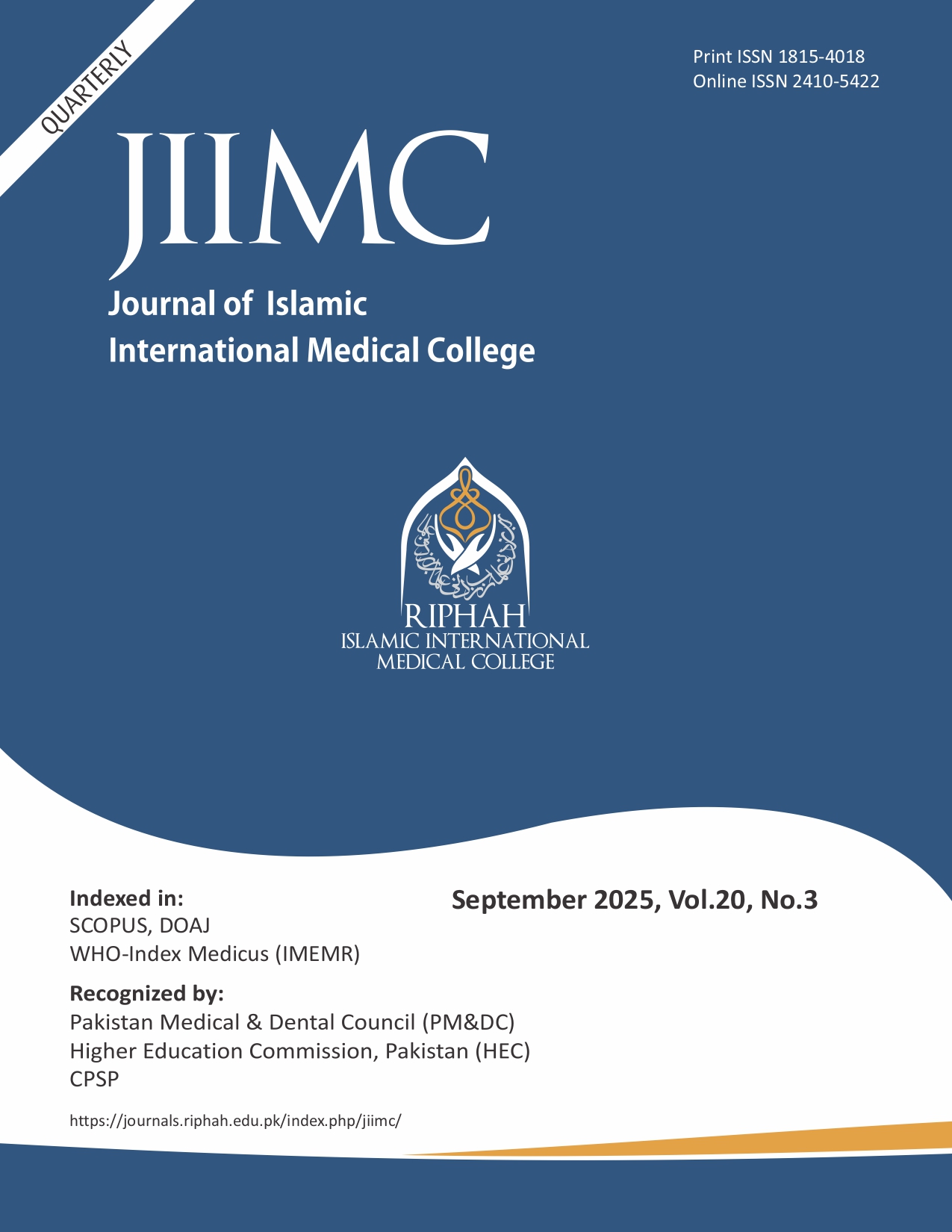Predictive Role of Skull Fracture Type and Location in Intracranial Hemorrhage Among Road Traffic Accident Victims: A CT-Based Observational Study
Keywords:
Brain, Computed Tomography; Craniocerebral Trauma, Intracranial Hemorrhage, Road Traffic Accidents, Skull Fracture.Abstract
Objective: To evaluate the predictive relationship between skull fracture types and the presence of Intra cranial Hemorrhage (ICH) in patients with head trauma due to Road Traffic Accidents (RTAs).
Study Design: Retrospective observational cross-sectional study
Place and Duration of Study: The study was carried out during the month of May 2025 at the Radiology Department of Lady Reading Hospital Peshawar
Materials and Methods: Following institutional review board approval, the retrospective study was carried out in May 2025 at the Radiology Department of Lady Reading Hospital Peshawar using data gathered in the Radiology Department's Health Management Information System (HMIS) between January and December 2022. The study analyzed CT brain scans of 300 RTA patients. Data included age, gender, fracture type and site, and presence and type of Intracranial hemorrhage (ICH). Chi-square and logistic regression were used to assess associations.
Results: Out of 300 RTA patients, 246 (82%) were male, with the majority aged 11–30 years. ICH was observed in 126 patients (42%), most commonly extradural hematoma (58.7%). Skull fractures were seen in 154 patients (51%), with parietal bone being the most frequently affected (30.7%). A significant association was found between skull fractures and ICH (p < 0.001). Logistic regression confirmed that fracture type independently predicted ICH (p < 0.001), with linear fractures showing the highest odds (OR = 5.34), followed by depressed (OR
= 4.51) and comminuted fractures (OR = 2.13). Fracture site was also significantly associated with hemorrhage type (p < 0.001).
Conclusion: Skull fracture type and location are significant predictors of ICH in RTA patients. Linear and depressed fractures, in particular, are strongly associated with ICH. These findings highlight the importance of detailed CT evaluation for early identification and risk stratification in head trauma cases.


